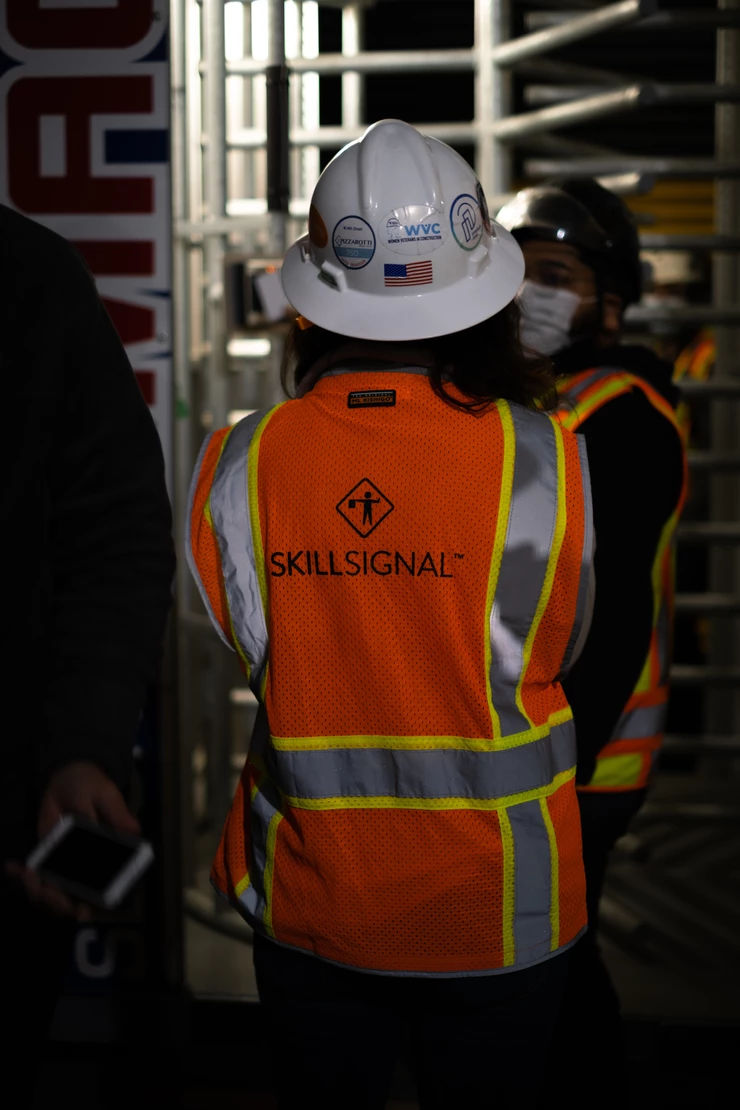Call us at +1 (917)-745-6877 for more info or click here
Construction sites and their safety have, and always will, come with an extra component: behavior. While we might view safety on site as something manageable purely by adequate training and putting the correct safety measures in place, this is not always the case.
In fact, safety on construction sites also has a lot to do with the psychology of workers. Their personalities and behavior styles can make a huge impact on how operations work and whether or not they succeed in a safe manner. The same goes for how worker-to-worker interactions and worker-to-superior interactions occur.
In this article, we’ll be giving you the rundown on behavior-based safety. This includes what it is, how it works, and the best 3 ways for you to implement its principles on your construction sites.
The Cambridge Center for Behavior Studies defines behavior-based safety as follows:
“A process that creates a safety partnership between management and employees that continually focuses people’s attentions and actions on theirs, and others, daily safety behavior.”
This definition makes one thing clear: BBS is an approach and a process, not just an idea. It is not enough to simply assume the intentions of others or trust that safety tips will not go unrecognized.
Rather, BBS should use empirical research to study the habits and behaviors of workers, and then apply this knowledge in a constructive way.
Ultimately, a greater understanding of the person and their cognitive processes can greatly influence the success of safety measures on-site.
Let’s take a look at what is called the “ABCs” of behavioral-based safety.
So, what does ABC stand for in this context? BBS falls underneath the broader field of study called organizational behavior management. Here, much research has been done on Activators, Behaviors, and Consequences.
The activator is what triggers a behavior – and behaviors always have consequences. For example, think of the following incident on site. A worker approaches his or her co-worker about a failure to adhere to safety regulations. Depending on the behavior exhibited by the former, and depending on the behavior exhibited by the latter, this exchange could turn ugly.
The co-workers may become aggressive or hostile, and this could lead to a number of different consequences. For example, the hostility between the two could lead to a lack of productivity and adherence to the rules. The same type of thing can happen when it comes to a worker-superior relationship.
For these reasons, it’s important to study behaviors, and put measures in place to adjust these behaviors.
Training certainly supplies workers with the knowledge to succeed in safety adherence. But, there is more to it than that. Keep reading to find out what we think are the best 3 ways to implement behavior-based safety on your construction sites.
If you are new to implementing BBS, there is a sure-fire way to start really doing your research and finding solutions to problems. This is by looking at records and incident reports, and determining where the most safety problems on-site lie.
By reviewing the ABCs of the incident (the activator, behavior, and consequence), you can try to figure out how best to approach such situations in the future.
For example, changing the activator may change the behavior. If this doesn’t work, you need to put some real effort into studying and working on the behavior so as to improve the consequences.
You’ll also be able to determine which departments need the most help. Therefore, you can begin to work on their relationships with each other and themselves. Behavior often stems from interactions as well as beliefs about oneself.
The idea of positive and negative reinforcement is a widely studied field in psychology. When you reward someone for their behavior, this is called positive reinforcement.
Offering things like rewards and incentives for adhering to rules and reporting safety hazards can be a great way to use positive reinforcement on site.
On the other side of the coin, negative reinforcement is when a behavior is threatened with some kind of punishment. For construction workers, the punishment is more often than not an injury. This is because not adhering to correct safety practices can result in harm to the worker or a co-worker.
This is not a direct threat from the supervisor. Rather, it is a consequence that cannot be avoided without the proper behavioral response to the activator. Again, proper research and insight into how the activator triggers the individual or group’s response can make a real difference to the consequences.
While injury is an indirect threat, there are also ways of making direct ones. For example, by using punishments like written warnings and disciplinary hearings to dissuade workers from behaving in incorrect, unsafe manners.
These measures are necessary in construction. They are a way to make sure that people adjust their behavior according to how the company wishes to operate.
However, it’s important to remember that construction sites naturally see people from all different walks of life, with different backgrounds, mentalities, and, of course, behavioral styles.
Because of this, threats of direct punishment will not work for everyone. So, it is important to figure out a way to change either the presence of the activator or the extremity of the behavior. Processes need to run smoothly, and keeping on top of how your employees behave is a must.
Of course, none of the above is possible without the right kind of example being set by superiors and management. Adequate training and proper research on behavioral-based safety are necessary to improve how safety operates on your construction site.
Luckily, we are here for you. Learn more about our all-in-one safety and compliance app that can help you to keep track of incidents/accidents, and ultimately work on the ABCs of behavioral-based safety.
https://behavior.org/help-centers/safety/Articles%20of%20Interest/
https://en.wikipedia.org/wiki/Behavior-based_safety
https://www.aubreydaniels.com/media-center/sustaining-bbs-going-back-basics
#construction #safety #compliance #constructionsafety #safetytechnology #safetyapp #constructionriskmanagement #behavioralsafety #bbs

NEW YORK, N.Y., Sept. 13, 2018, 8 a.m., EDT -- SkillSignal LLC, a New York-based tech company founded by Sebastien de Ghellinck, released an innovative…

Today, there is no surprise that technology is paving the way for safer and enhanced practices. Similarly, like any major industry, the construction industry is…

There is a significant amount of risk for workers in the construction industry. And as such, there are loads of occupational health and safety standards…
Selected as #1 by top ENR General Contractors. Loved by thousands of Trade Contractors across the US.




















